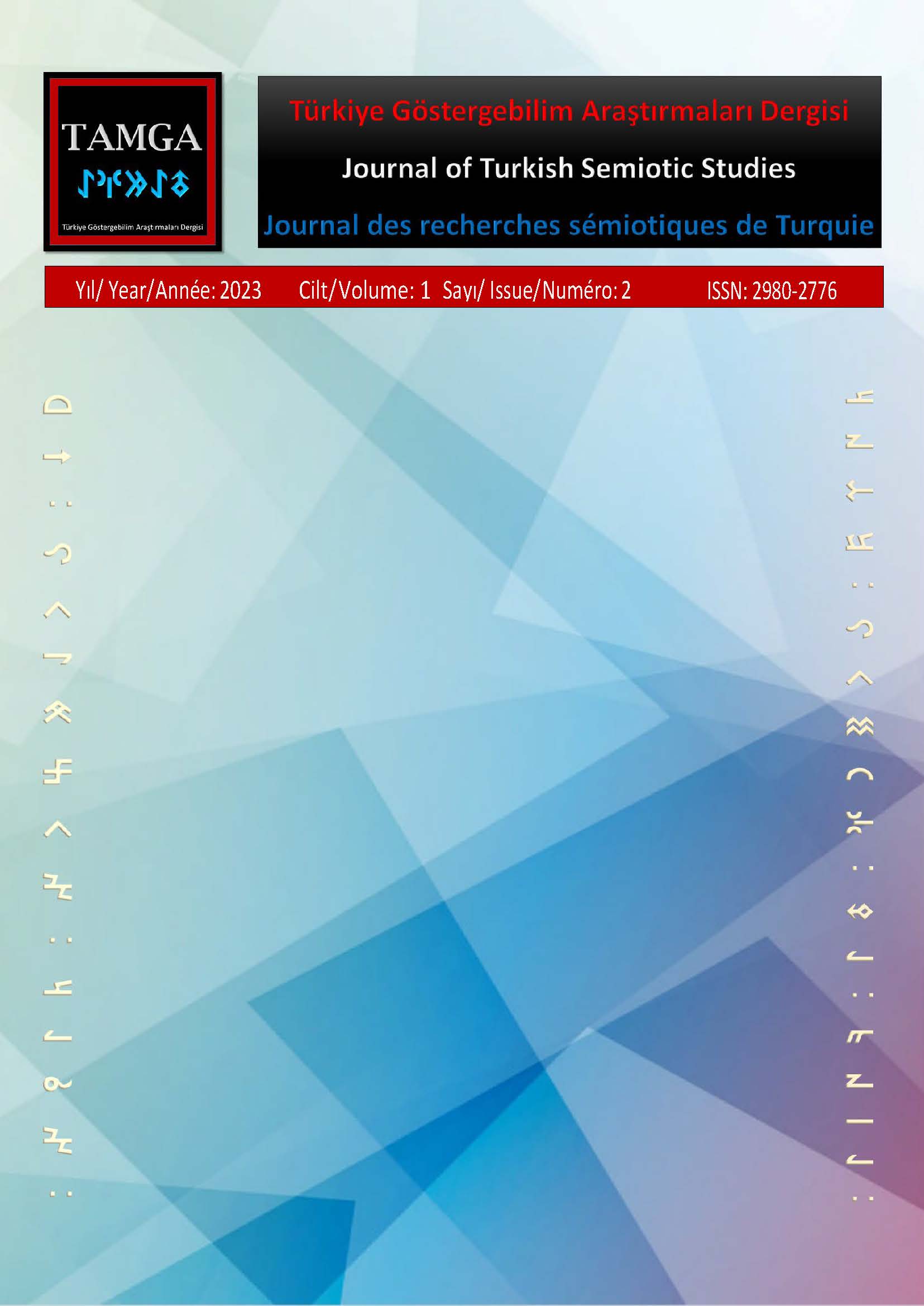Satish Alekar'ın Dynasts (2003) kitabı üzerine bir inceleme: Edebî söylemin Greimassçı göstergebilimsel analizi
DOI:
https://doi.org/10.5281/zenodo.10442985Anahtar Kelimeler:
Göstergebilim, Greimas, anlam, anlatı, yolsuzluk, açgözlülük, güç dinamikleriÖzet
Bu çalışma, Satish Alekar'ın Dynasts adlı oyunundaki anlatım tarzını göstergebilimsel dörtgen analizi tekniğini uygulayarak incelemektedir. Amaç, metnin altında yatan anlamları ve sembolleri ortaya çıkarmak, Alekar'ın sanatsal seçimlerine ve bunların oyunun genel mesajı üzerindeki etkilerine ışık tutmaktır. Estetik kronotop, olay örgüsündeki mücadele ve sembolizm kullanımı, Hanedanlar'daki edebî söylemin göstergebilimsel analizi ile ilişkili olarak incelenmektedir. Ayrıca analiz, Alekar'ın karakterleri aracılığıyla toplumsal normlara ve değerlere nasıl meydan okuduğunun altını çizerken, güç dinamiklerinin tasvirini ve ahlakın keşfini inceliyor. Hikâye, ahlak dışı yaşam tarzlarına kasıtlı olarak rıza göstermenin kişisel ve toplumsal çöküşe yol açabileceğini ima etmektedir. Bu tema, oyun boyunca yinelenen çürüyen ilişkiler ve yozlaşma motifiyle daha da pekiştiriliyor. Oyun, açgözlülüğün evrensel doğasını ve cinsiyetleri ya da toplumsal rolleri ne olursa olsun karakterler üzerindeki etkisini vurgular. İnsan doğası ve toplumsal normlara ilişkin bu keşif, metinde düşündürücü bir sosyo-politik eleştiri sağlıyor.
Referanslar
Alekar, S. (2003). Dynasts. Collected Plays of Satish Alekar. Oxford University Press.
Alekar, S. (2009, 24 January). Theatre Gupshup. Interview by Reema Gehi. [Interview]. Mumbai TheatreGuide. Retrieved from https://www.mumbaitheatreguide.com/dramas/interviews/28-satishalekarinterview.asp#.
Bandyopadhyay, S. (2009). Foreword. Collected Plays of Satish Alekar. Oxford University Press.
Bogatyrev, P. (1976). Semiotics in the Folk Theater." Semiotics of Art: Prague School Contributions, Ed. Ladislav Matejka and Irwin R. Titunik, 33-49.
Dharwadkar, A. B. (1955). Theatres of Independence. University of Iowa Press.
Eco, U. (1975). A Theory of Semiotics. Indiana University Press.
Elam, K. (1980). The Semiotics of Theatre and Drama. Routledge.
Gill, H. S. (1996). The Semiotics of Conceptual Structures. Bahri Publications Private Limited.
Greimas, A. J. (1971). Narrative grammar: Units and levels. MLN, 86(6), 793–806.
Greimas, A. J. (1983). Structural Semantics: An Attempt at a Method (Daniele McDowell. Ronald Schleifer and Alan Velie, Trans.). Nebraska University Press.
Greimas, A. J. (1987). On Meaning. University of Minnesota Press.
Greimas, A. J. & Courtés, J. (1982). Semiotics and language: an analytical dictionary (Daniel Patte, James
Lee, Edward McMahon II, Gary Phillips, Michael Rengstorf Larry Crist, Trans.). Indiana University Press.
Greimas, A. J. & Fontanille, J. (1993). The Semiotics of Passions: From State of Affairs to States of Feelings. University of Minnesota Press.
Kanonge, D. M. (2009). Reading narratives in the Septuagint: A discourse on method. In J. Cook (Ed.), Septuagint and reception. Brill. (pp. 361-381).
Kanonge, D. M. (2010). The emergence of women in the LXX Apocrypha: A Semiotic Study [Unpublished PhD thesis]. North West University, Department of Greek.
Martin, B., & Ringham, F. (2000). Dictionary of semiotics. Bloomsbury Publishing.
Merriam-Webster dictionary (n. d.). Brahmin (Def. 1). Merriam-Webster dictionary. Retrieved 29 August, 2023 from https://www.merriam-webster.com/dictionary/brahmin.
Propp, V. (1968). Morphology of the Folktale. University of Texas Press.
Rajguru, S. P. (2016). Absurdity in Modern Indian Drama- Special reference to “Mahanirvan” or “The Dread Departure”. Research Directions, 4(5), 1-8.
İndir
Yayınlanmış
Nasıl Atıf Yapılır
Sayı
Bölüm
Lisans
Telif Hakkı (c) 2023 Sapanpreet Kaur, Ramanpreet Kaur

Bu çalışma Creative Commons Attribution 4.0 International License ile lisanslanmıştır.



